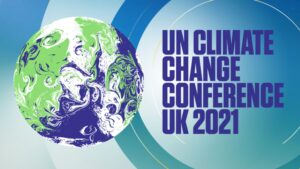By Sonny Sehra

Spending during the holiday season is expected to increase by a staggering 31% since 2020, returning to pre-COVID numbers, as lockdown measures gradually ease. While this may be good for retailers, environmentalists say the effects are detrimental on the climate.
Research suggests that each shopper individually produces 1,400 additional pounds of carbon dioxide emissions (CO2) into the environment during the holiday season, which is on par with three weeks of driving a car. Household waste also increases by more than 25%, adding millions of tons to landfills.
Christmas trees alone account for 10 million sales yearly, 90% shipped from China, intensifying carbon emissions.
Staunch environmentalist Ariana Tsegai, 19, frequently shops during this time of year and says shopping online is much more efficient for the climate. “Being conscious of our consumption is the first step to reducing our carbon footprint,” said Ariana. “One way to be more eco-friendly and sustainable is to shop online. In-person shopping means more car usage, which means more greenhouse gas emissions. Shopping on your computer tackles that problem quickly and conveniently.”
Ariana also proposes the solution of minimalism. “It’s a really famous saying: less is more. My family has used the same Christmas tree since I was a child. Be conscious and selective of what you buy. Reuse if you can,” said Ariana.
According to the Environmental Protection Agency, nearly half of consumers waste more food during the holiday season than any other season. 70% of consumers bought extra food “just in case” they had unexpected visitors. “Excessive shopping is horrible for the environment,” said Ariana.
Sarabjeet Kaur, 44, works in the return department of Costco and said she always witnesses a proliferation of returns during the holiday season. “There’s always a huge increase in returns during the holidays and what a lot of shoppers don’t know is that not all of it is resold,” said Kaur.
Returned goods contribute to greenhouse gas emissions, with billions of them going into landfills.
Although returning these products is free, the real price is the environment, with about 15% of the landfill waste comprising the carbon dioxide in the atmosphere. “


